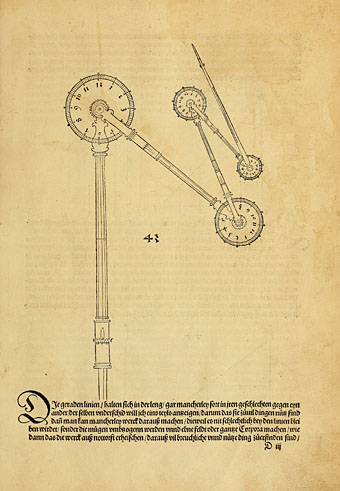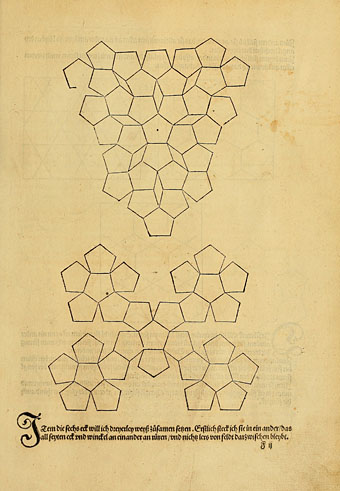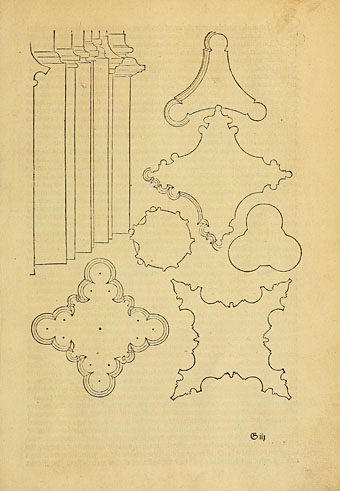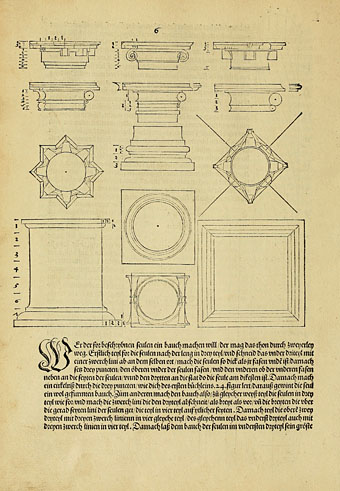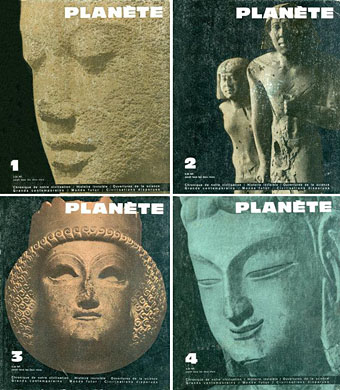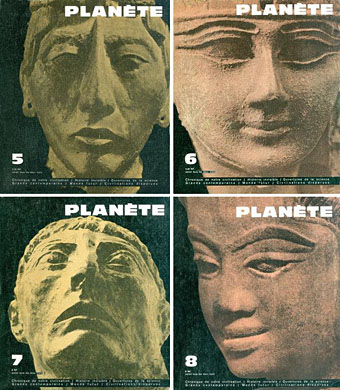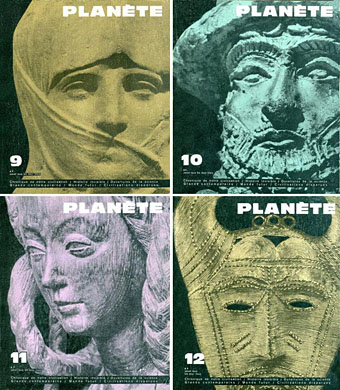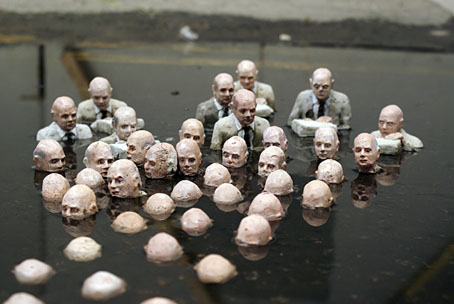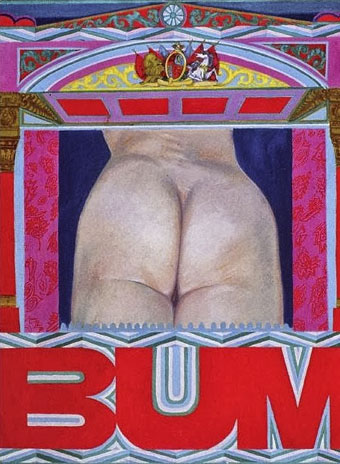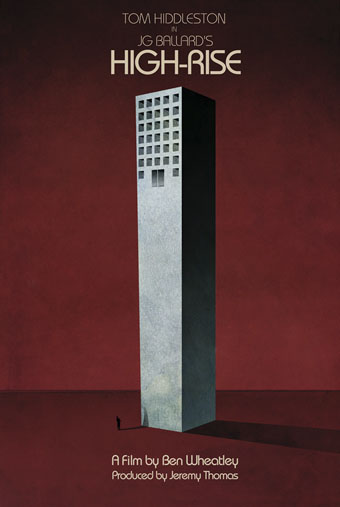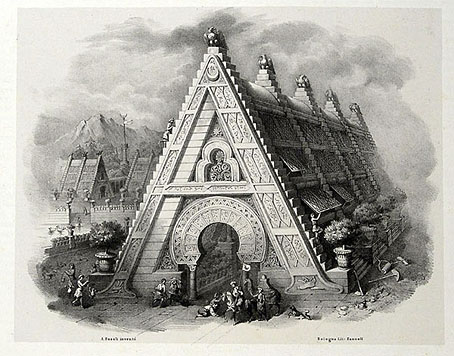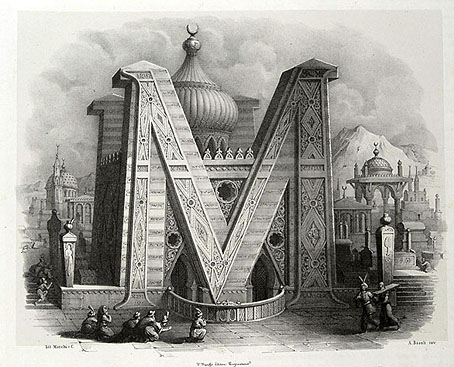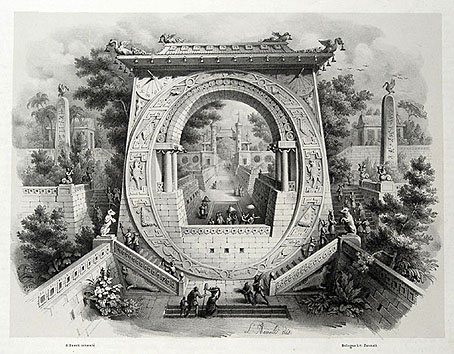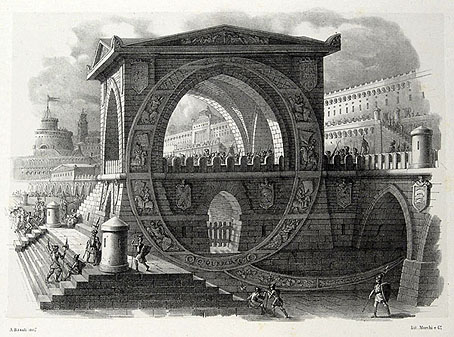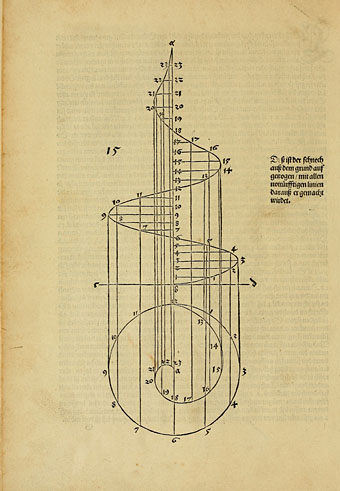
Underweysung der Messung (1525), a book of drawing instruction by the great Albrecht Dürer, predates Hieronymus Rodler’s “useful booklet” by six years. This also includes some perspective work although the lessons here are mostly concerned with the careful construction of various shapes, tesselated patterns and solid figures. Two of the illustrations at the end showing an artist using drawings guides are very familiar from reproduction in numerous art books; once again it’s good to see these pictures in their original context. This is also the book in which Dürer demonstrates the construction of letters of the alphabet. His lettering guides are almost as familiar as the illustrations, they often turn up in histories of typography, and now form the basis of several font designs. Durer Caps from P22, and Durer Initials from GLC, both give you an option of construction lines or solid fills; they also supply the letter U which is missing from the artist’s alphabet. Elsewhere there’s a free font, Duerer (sic) Latin Constructions and Capitals, available from l’Abécédarienne although this design lacks the U. Dürer’s book may be browsed here or downloaded here.
